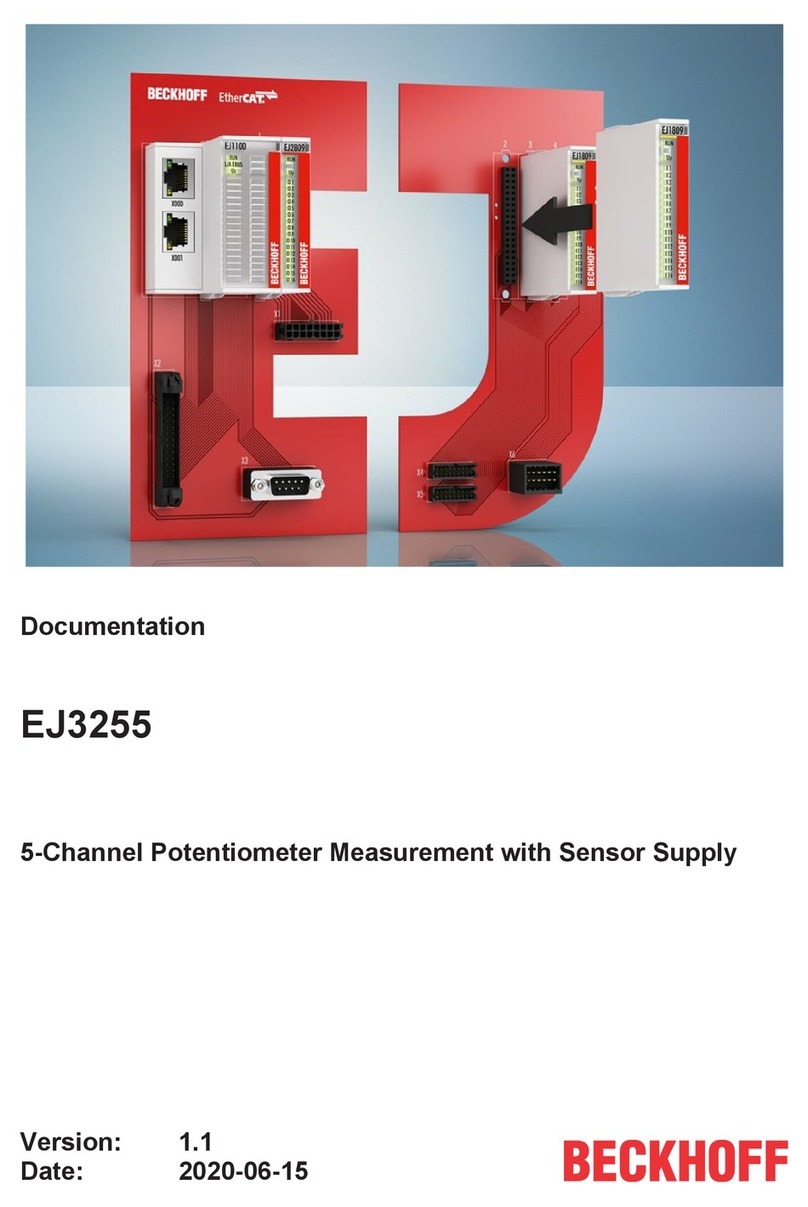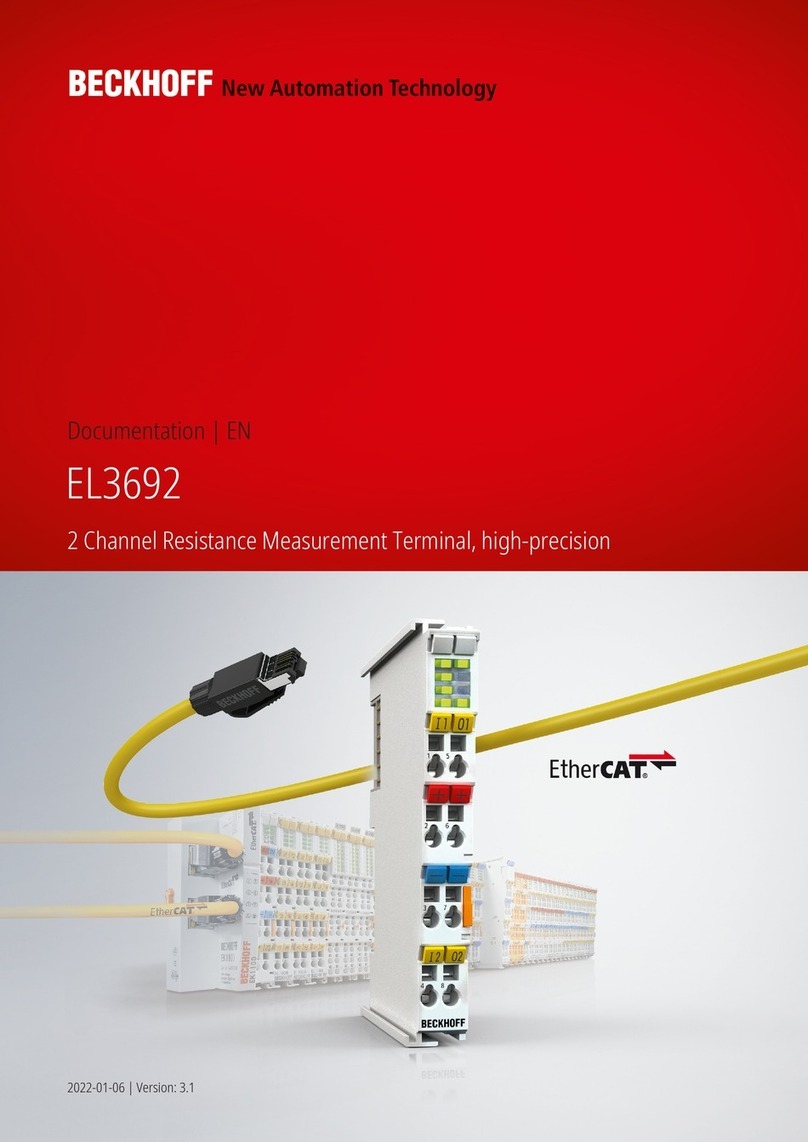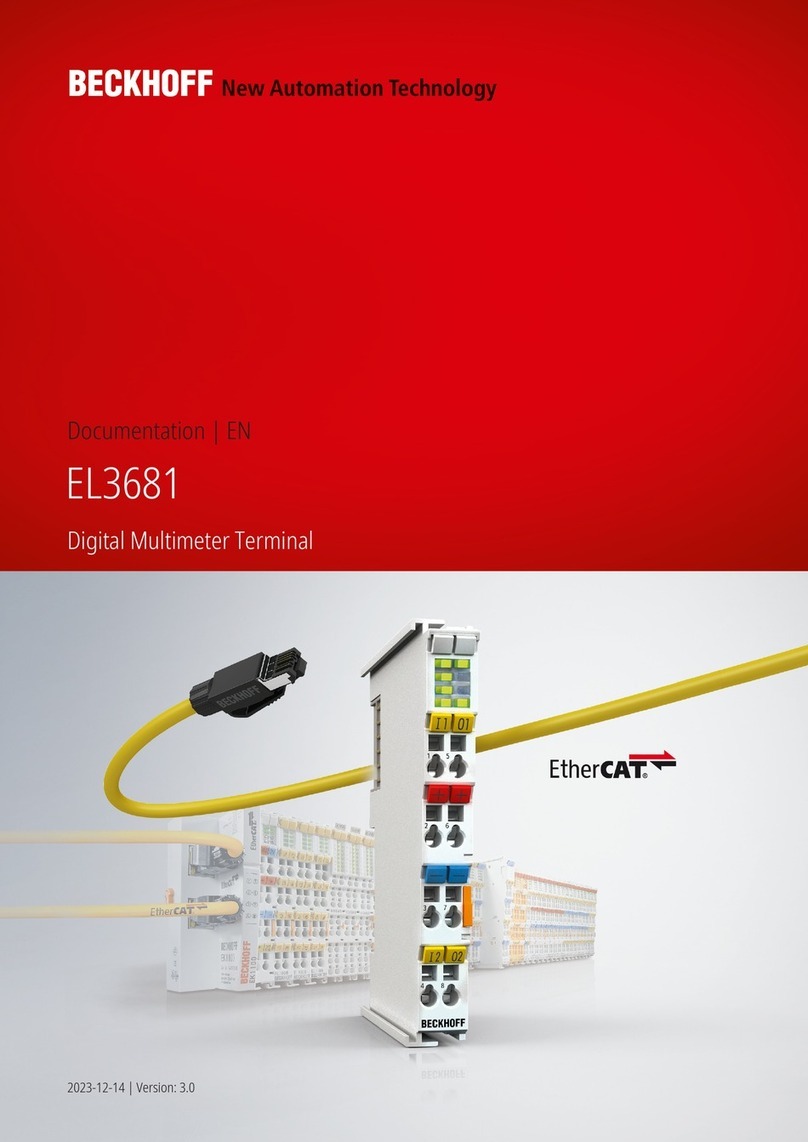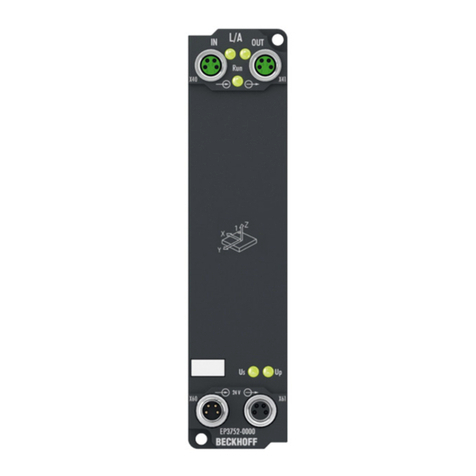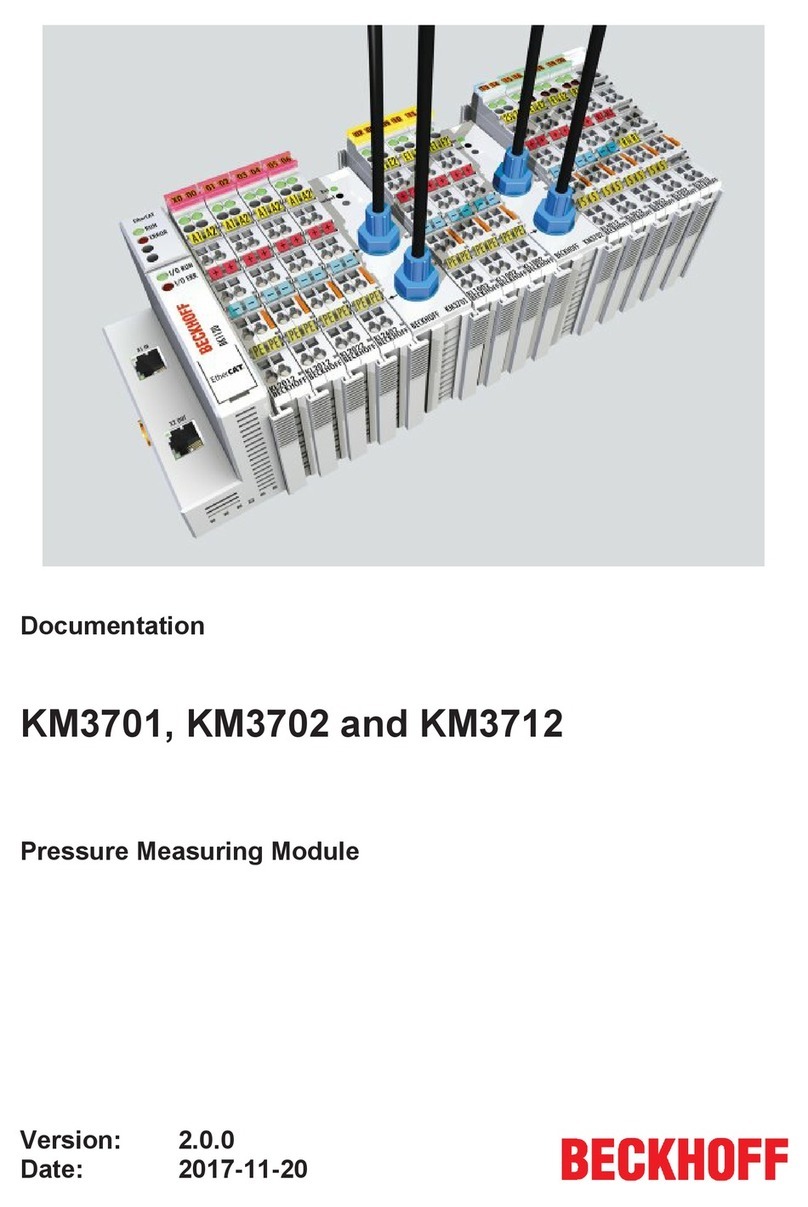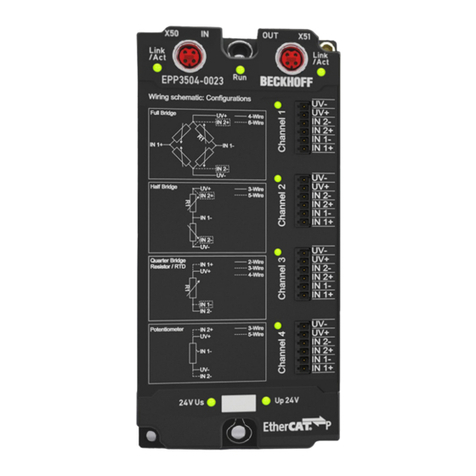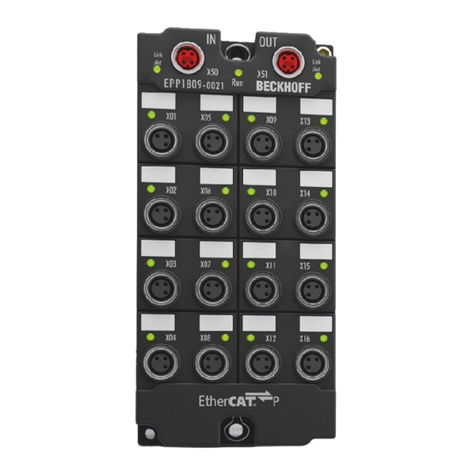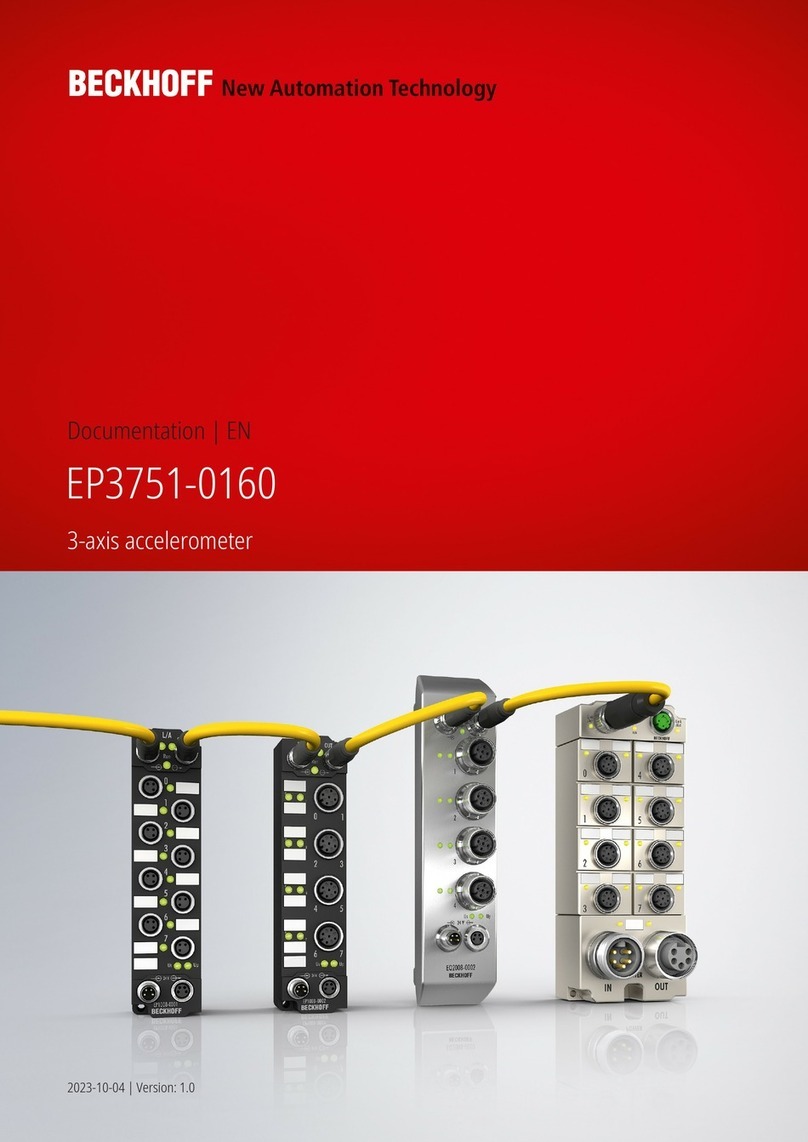
Table of contents
EP3356-0022 3Version: 1.4
Table of contents
1 Foreword ....................................................................................................................................................5
1.1 Notes on the documentation..............................................................................................................5
1.2 Safety instructions .............................................................................................................................6
1.3 Documentation issue status ..............................................................................................................7
2 Product overview.......................................................................................................................................8
2.1 EP3356-0022 - Introduction...............................................................................................................8
2.2 EP3356-0022 - Technical data ..........................................................................................................9
2.2.1 Additional checks............................................................................................................. 10
2.3 Scope of supply ...............................................................................................................................10
3 Basic principles of strain gauge technology ........................................................................................11
4 Mounting and Cabling.............................................................................................................................18
4.1 Mounting..........................................................................................................................................18
4.1.1 Dimensions ...................................................................................................................... 18
4.1.2 Fixing ............................................................................................................................... 19
4.1.3 Tightening torques for plug connectors ........................................................................... 19
4.1.4 Functional earth (FE) ....................................................................................................... 19
4.2 EtherCAT.........................................................................................................................................20
4.2.1 Connectors ...................................................................................................................... 20
4.2.2 Status LEDs..................................................................................................................... 21
4.2.3 Cables.............................................................................................................................. 21
4.3 Supply voltages ...............................................................................................................................22
4.3.1 Connectors ...................................................................................................................... 22
4.3.2 Status LEDs..................................................................................................................... 23
4.3.3 Conductor losses ............................................................................................................. 23
4.4 Resistor bridge ................................................................................................................................24
4.5 UL Requirements.............................................................................................................................26
5 Commissioning/Configuration ...............................................................................................................27
5.1 Integration in TwinCAT ....................................................................................................................27
5.2 EtherCAT slave process data settings (PDO) .................................................................................28
5.3 Basic function principles ..................................................................................................................30
5.4 Application notes .............................................................................................................................39
5.5 Calibration and adjustment..............................................................................................................42
5.6 Notices on analog specifications .....................................................................................................46
5.7 Voltage measurement .....................................................................................................................51
5.8 Distributed Clocks mode..................................................................................................................53
5.9 Process data....................................................................................................................................54
5.10 Object description and parameterization .........................................................................................62
5.11 Example program ............................................................................................................................75
5.12 Restoring the delivery state .............................................................................................................80
6 Appendix ..................................................................................................................................................81
6.1 General operating conditions...........................................................................................................81
6.2 Accessories .....................................................................................................................................82
6.3 Version identification of EtherCAT devices .....................................................................................83
